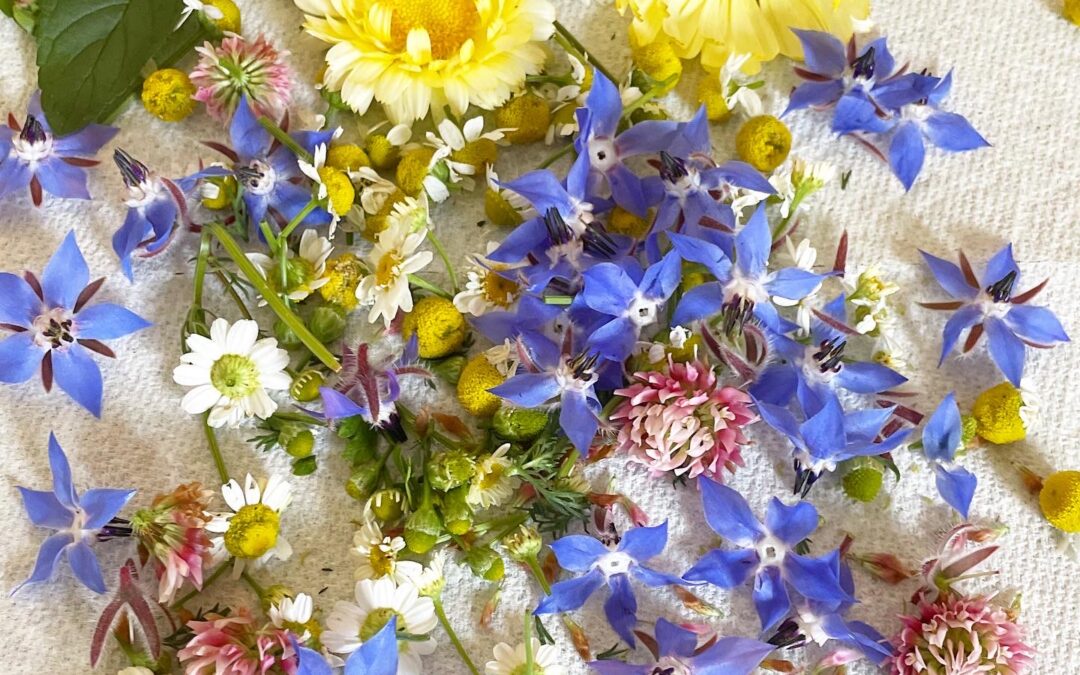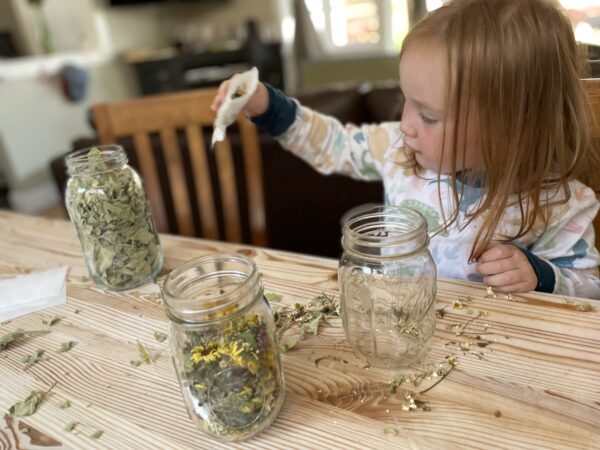Plants are for healing, and animal products are for nutrition. That is the premise of the GAPS Diet, and the recently popular Carnivore Diet.
Read: Red Meat is Good for the Earth and You 🌎
Last year I experimented planting healing flowers, mainly because they were pretty, but also to try making teas for winter coughs, colds, and other minor illnesses. As we’re now in March, I can share with you that they work fantastically well!
As we approach spring, consider adding some of these easy-to-grow flowers and herbs to your garden. Not only will it get you outside and in the delicious sunlight, but you will love that a delicious tea can replace a less-than-ideal over-the-counter medication.
This is informational in nature, and not intended to be medical advice. I am not a doctor, nor do I play one on the internet.
Where to buy herb seeds:
These are not affiliate links, but are where I have had success getting good seeds that have good germination rates, and reliably send what they claim they are sending:
- Johnny’s seeds (excellent quality and many varieties)
- Swallowtail Seeds (less quantity and low shipping)
- Baker’s Creek (has many varieties of rare seeds- including stevia!)
- There are many other great companies that I haven’t tried, I’d love to know your experience!
Do not buy seeds from Amazon, you frequently will not get what you were told you were getting. Etsy can be hit and miss, be sure you’re doing your business with a reputable shop on Etsy if you choose to go through there.
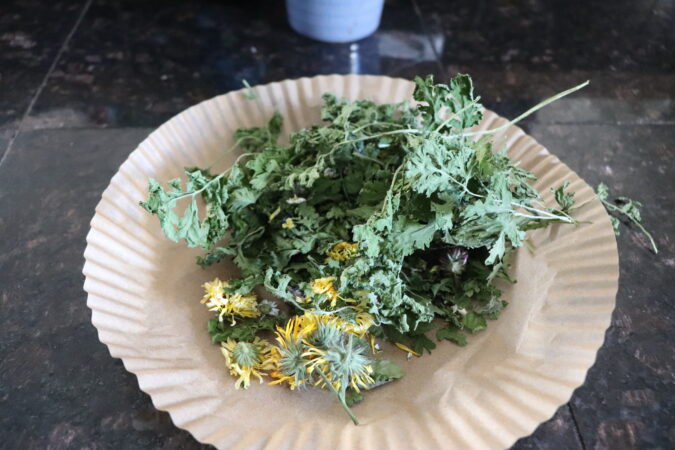
Feverfew leaves and calendula flowers, dried
How to dry Herbs for Tea
Drying herbs for tea is very simple.
- Rinse the herbs well in clean water and gently shake to dry.
- If you only want the leaves or flowers, it can be helpful to separate them before drying, but it’s not necessary.
- If your herbs contain small parts, place on a parchment paper tray, or dish cloth, or something else to keep the small petals and leaves from flying all over the place in the dehydrator.
- Dry on medium if your dehydrator has heat settings, start overnight and add 12 hours if still not dry. You want all the water out of your herbs to store to prevent them from molding.
How to grow herbs for tea
All the herbs I have listed here grow happily in even poor soil. If you are new to gardening, I like Johnny’s Seeds the best for you, as they have detailed planting instructions on their packets.
Simple directions her herb growing:
- Start planting these seeds (raspberry is different since that comes in plant form) as soon as the soil can be worked- these can all handle a little frost.
- Plant the seed twice as deep as it is big. For tiny seeds like borage, this means barely covering it. For bigger seeds like calendula, they can be planted about half an inch deep.
- For spacing and location, I like to ‘chaos garden’ herb seeds, and just scatter, then cover in an area with soil. What comes up and thrives is what is meant to live there.
- Water daily until the second set of leaves form. The first set is the ‘seed leaves’ and the second set is called the ‘true leaves’.
- After the plant has established with multiple leaves, back up and water about once a week- this will vary based on your location. Over watering plants, or ‘killing with too much love’ is the biggest problem most new gardeners face.
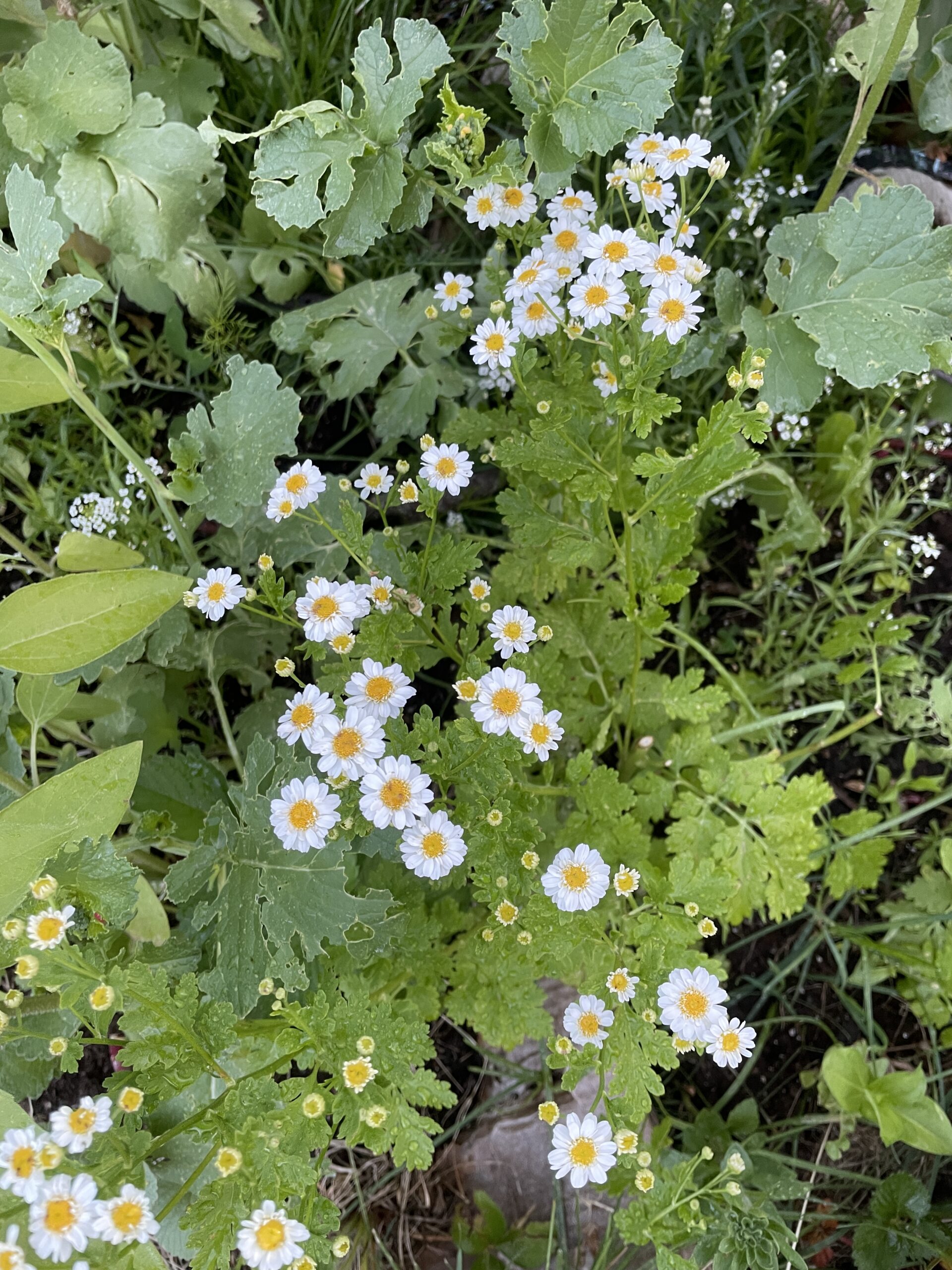
Feverfew grows among overgrown radishes that the toddler planted.
Feverfew:
This is my favorite both as a cut flower and for medicinal properties, as the name suggests, it acts as a fever reducer. Both the leaves and the flowers are useful for pain-reducing and fever-reducing and overall feeling better when ill.
This is a perennial in many zones, so chose a place where you can keep it in the ground over winter!
Mullein:
Mullein pops up in late summer here in Montana, often in recently disturbed earth. We found it here along a newish bike path, and it’s a good thing we harvested it when we did, as it was all mowed down the next week. Of all the herbs I collected and grew this year, I found this (along with feverfew) to be the most effective. Even pharmaceuticals aren’t useful for that persistent drippy nose or lingering cough, but mullein tea worked super well for us this winter!
To make mullein tea you really do want to use either tea bags or a coffee filter, as the small hairs on the leaves irritate the throat- the opposite of what you’re trying to do.
Use the fuzzy leaves for tea, and the flowers also have medicinal properties, though I haven’t done anything with flowers yet.
Clover:
Clover blossoms are a soothing addition to tea, and I love the mild taste. I haven’t found clover blossoms to be especially potent for their medicinal properties, but like to include them in my tea.
Clover also makes a nice ground cover, I have it mixed in with my lawn and between pavers.

Calendula flowers (yellow), borage (blue), clover (pink), feverfew (small white flowers), mint leaves
Calendula:
Another soothing herb, this herb is so pretty in the garden and blooms early. I add this to many teas as well as simmer it in jojoba oil to add to beef tallow and make lotion or a salve.
It’s easy to collect the seeds from this plant for next year as well.
Borage:
More for the bees and beauty than medicinal, this is a favorite of pollinators, and grows into a beautiful plant with blue flowers. The flowers are fun to float in tea and add to salads.
Red Raspberry Leaf:
Red raspberries are a must in our garden, as they are a favorite for the kids. Clean leaves can be harvested and used for teas for menstrual issues.
Stevia:
I don’t know that stevia has medicinal properties, but it’s fun to grow this sweet herb and add it to sweeten all the teas. I keep some growing in a south-facing window all winter too.
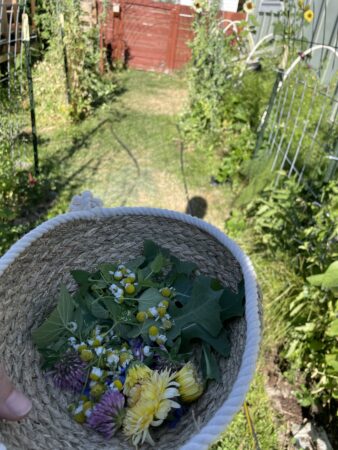
If you’re a busy person, a morning and evening walk around the garden is a beautiful way to connect with nature as you start and finish your day.
Camomile:
This sleepy-time herb looks similar to feverfew, but the petals of the white flowers slope down while feverfew flowers go straight out. Camomile smells so good! Add to teas to promote rest and relaxation. I love this as a cut flower as well!
Yarrow:
Yarrow is a perennial in many zones, and is both beautiful and medicinal! It works to reduce discomfort during illness and injury. I find yarrow to be a really helpful medicinal herb, and I love it in my garden!
Herb Combinations for Tea
I combine different dried herbs into different combinations. I like to add a little stevia to each batch for sweetness without sugar.
Cough and Cold:
- Mullin
- Plantain
- Feverfew
- Camomile
- Yarrow
- Stevia to improve taste
Female Issues:
- Raspberry Leaf
- Feverfew
General Illness:
- Feverfew
- Yarrow
- Wild Lettuce
- Camomile
Skin Lotion:
- Calendula
- Plantain
- Mullin
- Jojoba Oil
- Beef tallow
Seed Saving
The biggest benefit to saving seed is that you get seeds that thrive in your particular environment. The natural selection of seeds means that the seeds with the genetics that correlate best with your environment, soil composition, and other local factors are the plants that will produce the seeds. Other benefits of course include that seed saving saves money, increases self sufficiency, and puts you in touch with all the life cycle of your garden.
To save seeds, let some flowers from your best plant mature until the petals start to die. This takes a little trial and error, and I’m not going to cover seed saving in depth, but saving ‘dead’ flowers and trying them the next year is a fulfilling way to continue your garden.
Learn how to heal leaky gut

60-page ebook of all my best GAPS Diet (Gut and Psychology Syndrome) articles all in one place.

